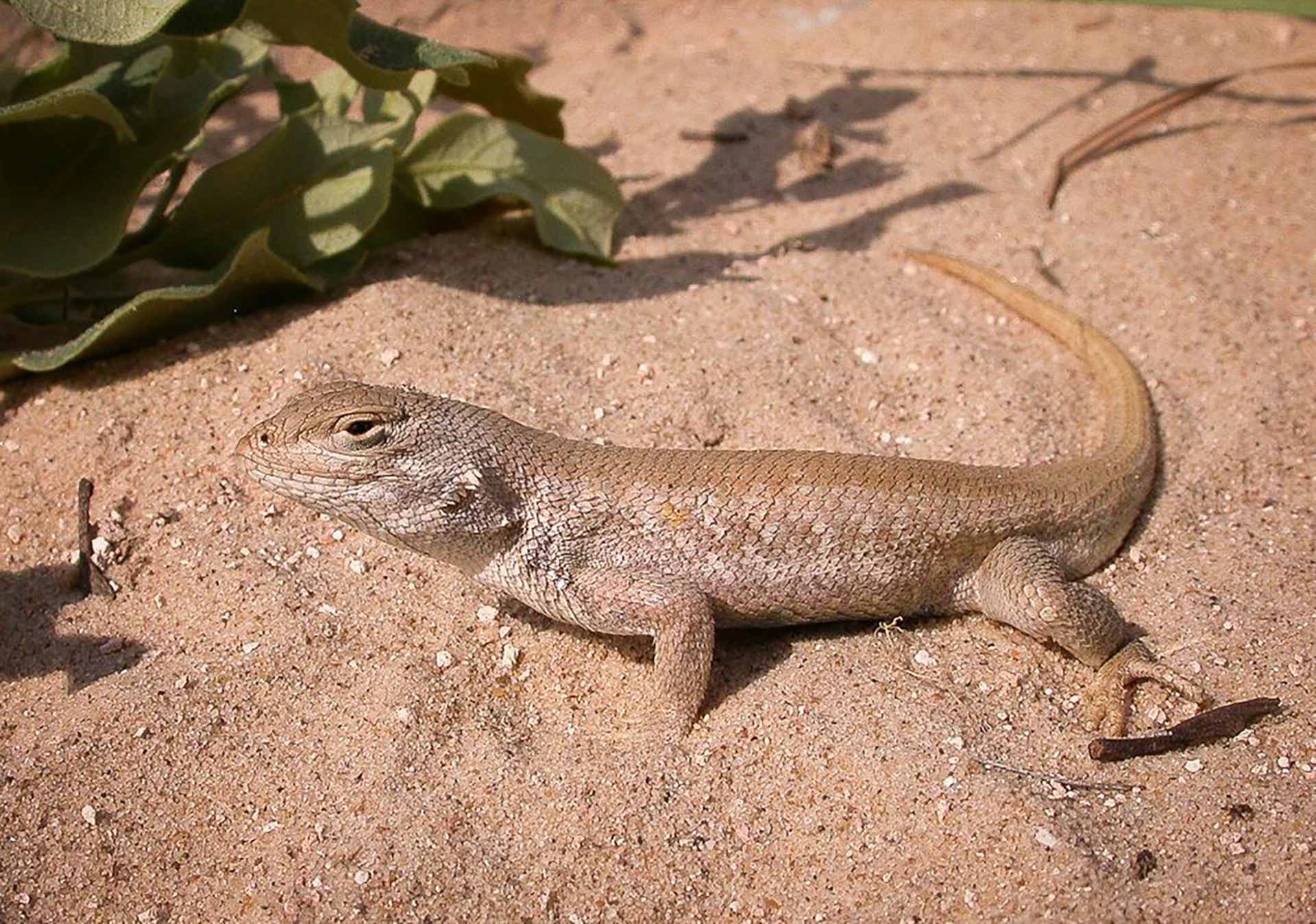
Are you ready to dive into the fascinating world of sagebrush lizards? These little reptiles may not be as well-known as their more famous counterparts, but they certainly have their own unique charm. With their striking blue bellies and intricate patterns, sagebrush lizards are a sight to behold. In this article, we will uncover 18 intriguing facts about these remarkable creatures, from their habitat and behavior to their impressive adaptive abilities. Whether you’re a nature enthusiast, a reptile lover, or simply curious about the wonders of the animal kingdom, get ready to have your mind blown by the incredible world of sagebrush lizards!
Key Takeaways:
- Sagebrush lizards are small, agile, and masters of camouflage, blending seamlessly into their surroundings. They play a vital role in ecosystems by controlling insect populations and are legally protected in some states.
- These incredible reptiles communicate through body language, lay their eggs in sandy soil, and have unique tail autotomy as a defense mechanism. With lifespans of up to 5 years, sagebrush lizards are truly fascinating creatures worth studying and protecting.
The Sagebrush Lizard is a Master of Camouflage
One of the most remarkable features of the sagebrush lizard is its ability to blend in seamlessly with its surroundings. Its skin color can range from gray to brown, helping it camouflage amongst the rocks and sagebrush where it resides.
Sagebrush Lizards are Small and Agile
These lizards typically measure between 3 to 6 inches in length, making them relatively small compared to other reptiles. Their slim bodies and long tails allow them to be incredibly agile, facilitating quick movements and impressive climbing abilities.
Males and Females have Distinctive Markings
Male sagebrush lizards possess vibrant blue patches on their bellies and throats, which they display during courtship rituals to attract females. Females, on the other hand, have orange or yellow bellies with distinct dark markings.
They are Diurnal Creatures
The sagebrush lizard is active during the day, primarily in the mornings and afternoons when temperatures are ideal for their activities. They spend their time basking in the sun, foraging for insects, and engaging in territorial displays.
Sagebrush Lizards are Insectivores
These lizards have a specialized diet consisting mainly of insects such as beetles, ants, grasshoppers, and spiders. Their swift movements and keen eyesight help them capture their prey with great precision.
They are Territorial and Solitary
Sagebrush lizards establish territories for themselves and fiercely defend them against intruders. They are generally solitary creatures and prefer to live alone; however, during the breeding season, males may engage in territorial disputes.
They are Excellent Jumpers
Sagebrush lizards are known for their impressive jumping abilities. With powerful hind legs, they can make daring leaps to evade predators or capture prey. Their athleticism is truly remarkable.
Sagebrush Lizards Have Unique Tail Autotomy
When threatened, sagebrush lizards can shed their tails as a defense mechanism. This allows them to escape from the clutches of predators while the detached tail continues to wriggle, acting as a distraction.
They Hibernate During Winter
In colder regions, sagebrush lizards undergo hibernation during the winter months. They find shelter in burrows or crevices, conserving energy until the arrival of warmer temperatures.
Sagebrush Lizards are Non-Venomous
These lizards are harmless to humans, as they do not possess any venomous traits. While they may bite if they feel threatened, their bites are typically painless and pose no serious danger.
They are Fast and Agile Runners
Sagebrush lizards are incredibly swift runners, capable of reaching speeds of up to 18 miles per hour. This agility allows them to escape from predators swiftly and efficiently.
They Communicate Through Body Language
Sagebrush lizards utilize various body movements and gestures to communicate with one another. These include head bobs, push-ups, color changes, and tail displays, all of which carry distinct signals.
Eggs are Laid in Sand or Soil
Females dig shallow nests in sandy or loamy soil to lay their eggs. The eggs are left to incubate on their own, and after several weeks, the hatchlings will emerge, ready to start their independent lives.
Sagebrush Lizards are Known for their Agility in Climbing
With their well-developed toe pads and sharp claws, sagebrush lizards are exceptional climbers. They can effortlessly maneuver on various surfaces, including rocks, trees, and shrubs.
They Play an Important Role in Ecosystems
Sagebrush lizards are not only fascinating creatures but also play a vital role in their ecosystems. As insectivores, they help control populations of insects, contributing to the balance of their habitats.
They have Lifespans of up to 5 Years
The average lifespan of a sagebrush lizard ranges from 3 to 5 years. However, some individuals have been known to live longer under optimal conditions.
Sagebrush Lizards are Protected Species
Due to their importance in maintaining ecological balance, sagebrush lizards are legally protected in some states. It is essential to respect their habitats and preserve their natural environments.
In Conclusion
The 18 sagebrush lizard facts mentioned here only scratch the surface of how intriguing and remarkable these reptiles truly are. Their unique adaptations, agile movements, and significant roles in ecosystems make them a fascinating species worth studying and protecting. So, the next time you encounter a sagebrush lizard in the wild, take a moment to appreciate its beauty and the wonders of nature.
Conclusion
These 18 sagebrush lizard facts have shed light on the intriguing world of these reptiles. From their unique adaptations to their important role in the ecosystem, sagebrush lizards are truly fascinating creatures. Their ability to camouflage, their diet preferences, and their behavior patterns make them a subject of great interest for scientists and nature enthusiasts alike. So the next time you come across a sagebrush lizard, take a moment to appreciate its beauty and importance in the delicate balance of nature.
FAQs
Q: What is the scientific name of the sagebrush lizard?A: The scientific name of the sagebrush lizard is Sceloporus graciosus.
Q: What do sagebrush lizards eat?A: Sagebrush lizards primarily feed on insects, spiders, and other small invertebrates.
Q: Do sagebrush lizards hibernate?A: Yes, sagebrush lizards enter a state of hibernation during the winter months to conserve energy.
Q: Can sagebrush lizards change their color?A: Yes, sagebrush lizards have the ability to change their color to blend with their surroundings, helping them evade predators.
Q: Are sagebrush lizards poisonous?A: No, sagebrush lizards are not poisonous or venomous.
Q: Where do sagebrush lizards live?A: Sagebrush lizards are commonly found in arid and semi-arid regions of western North America.
Q: How long do sagebrush lizards live?A: Sagebrush lizards typically live for 3 to 5 years in the wild.
Q: Are sagebrush lizards social animals?A: No, sagebrush lizards are solitary creatures and prefer to live alone.
Q: Do sagebrush lizards lay eggs?A: Yes, sagebrush lizards lay eggs, typically in sandy or rocky areas.
Q: What is the size of a sagebrush lizard?A: Sagebrush lizards can grow up to 3 to 4 inches in length.
Q: Do sagebrush lizards have any predators?A: Yes, sagebrush lizards are preyed upon by birds, snakes, and other larger reptiles.
Q: Are sagebrush lizards endangered?A: Sagebrush lizards are currently not listed as endangered, but habitat loss and human activities pose threats to their populations.
Q: Can sagebrush lizards swim?A: Sagebrush lizards are not strong swimmers and generally avoid water.
Q: How fast can sagebrush lizards run?A: Sagebrush lizards are known for their speed and agility, and can run at speeds of up to 18 miles per hour.
Q: Are sagebrush lizards nocturnal?A: Sagebrush lizards are diurnal creatures, meaning they are active during the day.
Q: Can I keep a sagebrush lizard as a pet?A: Keeping a sagebrush lizard as a pet may require special permits and is generally discouraged to ensure their conservation in the wild.
Q: How do sagebrush lizards communicate?A: Sagebrush lizards communicate through various visual displays, head bobbing, and push-ups, which are used to establish dominance or attract mates.
Q: Are sagebrush lizards territorial?A: Yes, sagebrush lizards are territorial and defend their territories from other lizards.
Was this page helpful?
Our commitment to delivering trustworthy and engaging content is at the heart of what we do. Each fact on our site is contributed by real users like you, bringing a wealth of diverse insights and information. To ensure the highest standards of accuracy and reliability, our dedicated editors meticulously review each submission. This process guarantees that the facts we share are not only fascinating but also credible. Trust in our commitment to quality and authenticity as you explore and learn with us.


